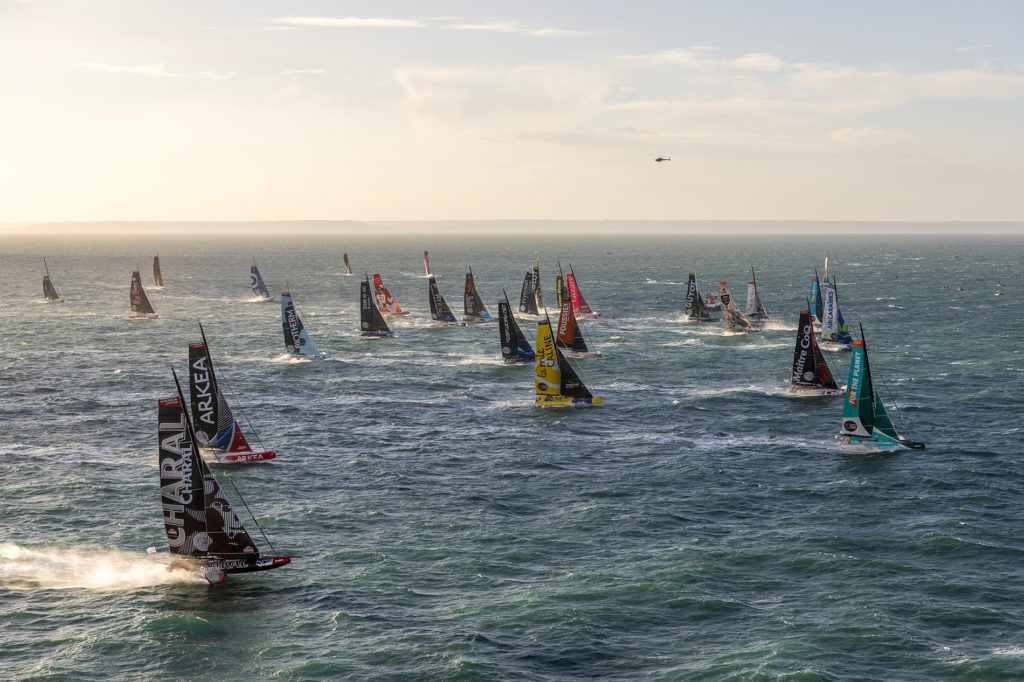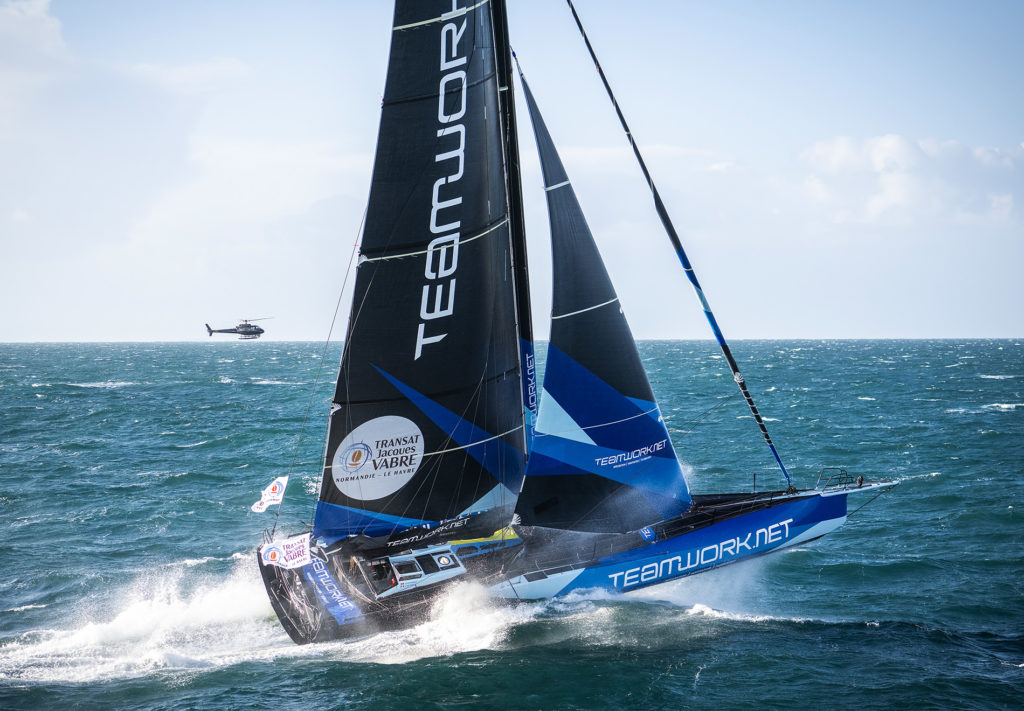Justine Mettraux did not hesitate to go to the coalface to shine on TeamWork, while Alan Roura and Simon Koster paid the bill on Hublot. As for Ollie Heer and Nils Palmieri, they were too quick to put the arrow to the left.
Text: Grégoire Surdez
What a transatlantic race! There was everything on this Jacques Vabre, which is blowing out its 30th candle with as much vigor as the low-pressure system that battered the fleet on the day of the real false start on October 29. A breathtaking show off Le Havre, with the Ultims taking off at more than thirty knots towards Martinique as planned. The Class 40s also enjoyed a cocktail of sun, clouds, sea and bracing winds, before stopping off in Lorient to let several nasty gales pass. This was in stark contrast to the IMOCA boats, which were warned just one hour before casting off that they would not be setting sail that day. Among the 40 unfortunate crews, the five Swiss entrants were moderately appreciative of this twist of fate and the ten days of waiting that followed.
Justine Mettraux (TeamWork), Alan Roura and Simon Koster (Hublot), and Ollie Heer and Nils Pal- mieri (Oliver Heer Racing) made the most of this dry spell while waiting for a weather window to open to send the Vendée Globe 2024 hopefuls out to sea – finally on November 7 – to fine-tune their strategy. “This was the central question of this Jacques Vabre. We had to wait until the eve of the finish (November 19) for the answer: those who opted for the sunny route and the slippery slopes in the trade winds finally won their case, despite an extended route.


The north: the obvious choice?
In the end, only one crew succeeded in climbing the north face. We’re talking, of course, about the “Jujus”, as they’re known in the world of ocean racing. By going to work on a direct route, they made the southerners lose the north for more than 5 days. A crazy cavalcade with the nose to the handlebars and the bow to the wind. A very violent front, gusting to over 40 knots just before finally setting course for Martinique. This is what TeamWork chose to face, rather than follow the herd and take the lead for five days. People talk about audacity and a gamble, but in reality, this northerly route was largely favourable according to the routing,” explains Julien Villion, Justine Mettraux’s team-mate and a great specialist in the analysis of weather files. The real gamble, in sailing, is to lengthen the route to gain speed, not to take the most direct route. And the real surprise is that nobody, apart from Groupe Dubreuil (Sébastien Simon and Iker Martinez), made the same choice, which seemed obvious to us.
The ascent of this North Face of the Atlantic was a real crowd-pleaser. And the long-distance duel was intense. During the separation, our route gives us a 24-hour lead when the two trajectories meet,” explained Justine Mettraux on her arrival in Fort-de-France. But as the days went by, we could see that the leaders to the south were sailing at much higher speeds than we’d expected. They also had a little more wind. Add to that a few minor technical problems which slowed us down a little at times, and in the end they managed to get ahead of us.”


Playing to win
Thomas Ruyant and Morgan Lagravière’s For People was untouchable in the final week of racing. But for the rest, the Jujus’ podium finish came down to very little. “We have no regrets, but our two-hour stop to repair the mainsail hook after the passage of the tropical front cost us dearly. Two hours is 40 miles. But with ifs, we’d win every race. So we take this 6th place snatched in the finale with no regrets. What we can see is that before the separation, our gap with Charal (then leader and now 4th) was 30 miles. And now that we’ve caught up, it’s still 30 miles. As far as we’re concerned, this means we’ve been on a level playing field with a boat that’s not as efficient as the leaders. If we’d just kept up with them, we’d still be at sea rather than here in Martinique.”
This tasteless race, with no real twists and turns, is a bit like that of Alan Roura and Simon Koster. Hublot never really got into the swing of things. Right from the start, the duo conceded ground on this boat, which is designed for anything but upwind sailing. Later on, we lost a few more feathers in the transition phase before reaching the trade winds,” says Alan Roura. Right up to the end, the wind always came in from the front. Hublot could have been aiming for a place in the Top 15, but was once again overtaken by 4 boats from the north in TeamWork’s wake. An insufficient result for the duo, who got on like a house on fire and have already promised to do it again.
The other 100% made-in-Switzerland duo experienced an even darker and crueller scenario. Weighed down by technical problems and serious rigging damage, Ollie Heer and Nils Palmieri wisely put the arrow to the left to reach the Spanish port of Sanxenxo, north of Vigo. This was a major blow for the Zurich-based skipper, who was due to take part in the single-handed Return to Base, but it does not call into question his Ven- dee Globe objectives. “I’ve already clocked up a fair number of miles at sea, and above all I’ve completed the Route du Rhum in 2023. My aim is to find a main sponsor so that I can be on the pontoon in Les Sables in a year’s time under the best possible conditions. Nothing has been signed yet, but it’s well on the way.

